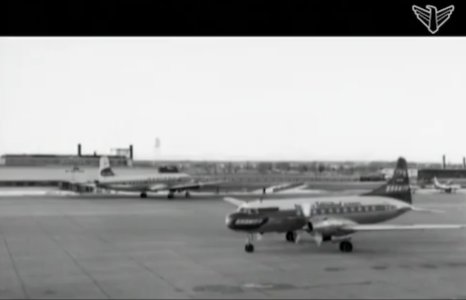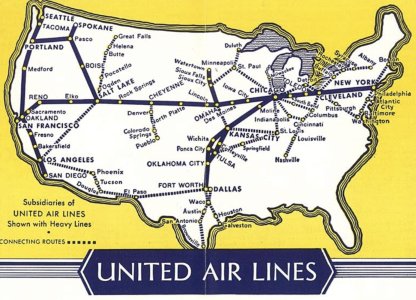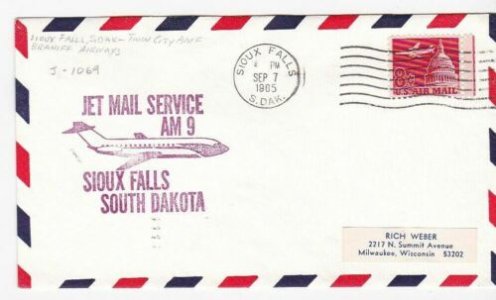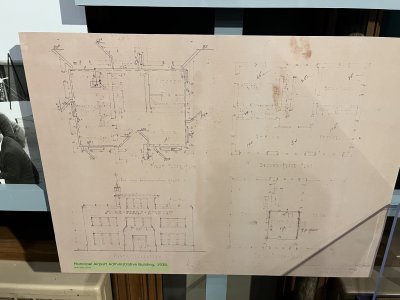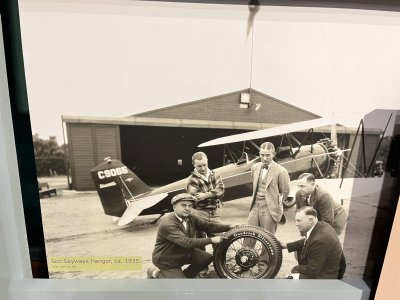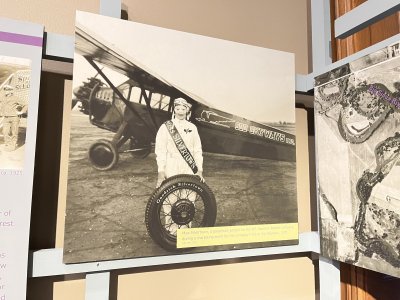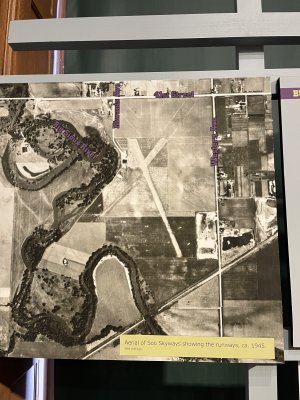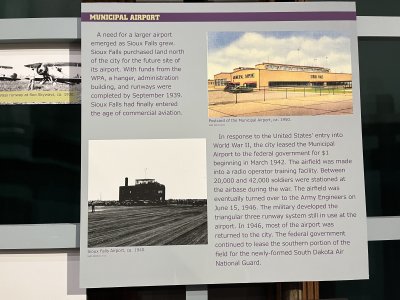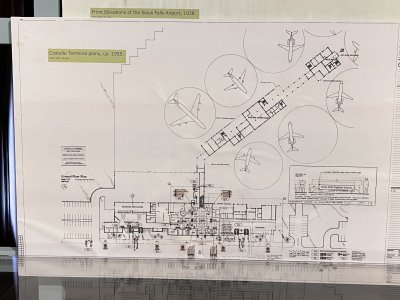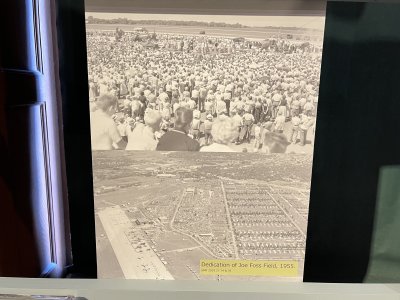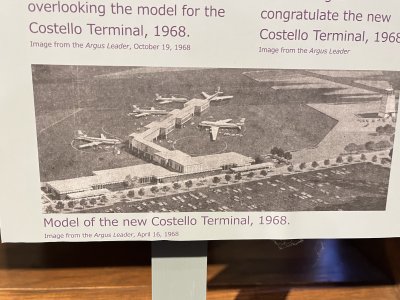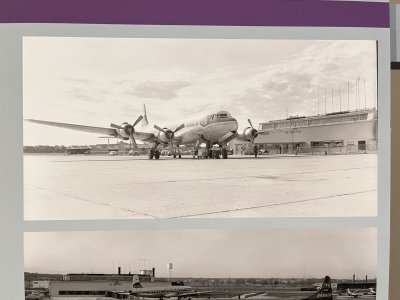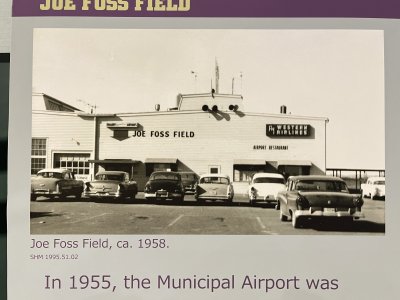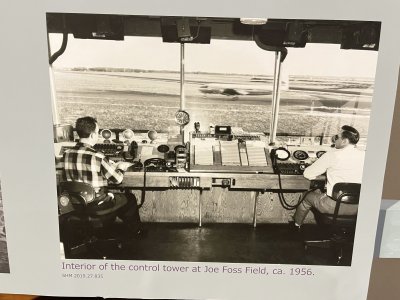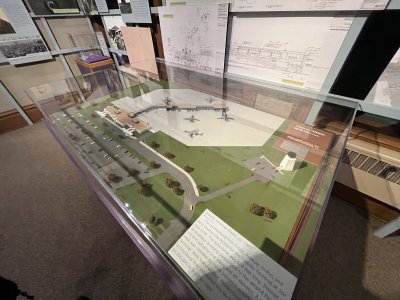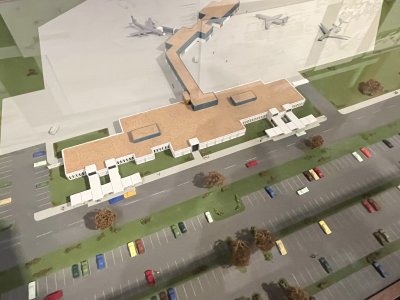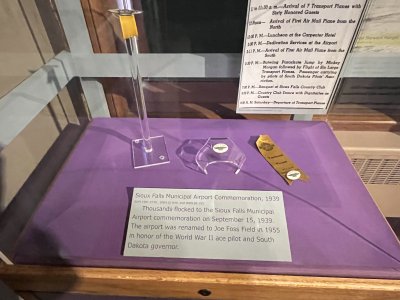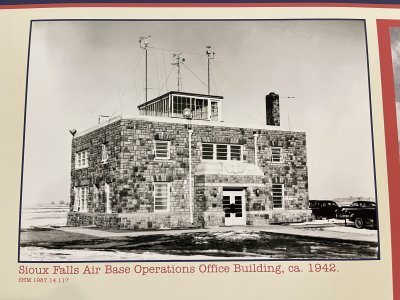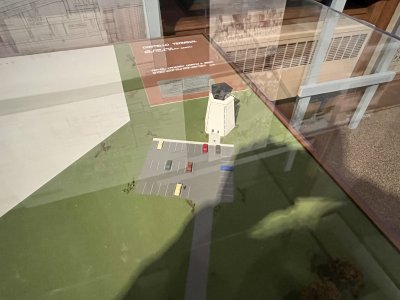JJ Skippy
Well-known member
Here we go for another history post, cranking it way back to the original days of aviation in the region. We’ll be diving into Mid-Continent Airlines, leading up and into the acquisition by Braniff International and their brief stay before leaving the city.
Sometime around 1940-1941, Mid-Continent Airlines began service to Sioux Falls as part of several routes. They were one of, if not the first commercial passenger airline to inaugurate service to Sioux Falls. The Dakotan route (Flight 3) connected Minneapolis to Sioux Falls, followed by stops in Huron and Aberdeen, South Dakota, and Bismarck and Minot, North Dakota. The Twin Citian route (Flight 4) is basically The Dakotan heading back to Minneapolis. By 1943, The Corn Husker route (Flight 5) was added to FSD, connecting Rochester, Minnesota to Sioux Falls before heading south to Sioux City, Omaha, and Kansas City. Aircraft for the time included Lockheed L-10 Electras and Lodestars. By 1945, Mid-Continent added Douglas DC-3s to their fleet, becoming a common sight in not just Sioux Falls, but for a major portion of commercial airports in the United States into the postwar era. Sioux Falls became a stop on a very large north-south route, stretching as far as Minot to as far south as New Orleans, truly making the world a smaller place. All flights went to DC-3s by the late 40s. In 1950, Mid-Continent added the Convair 240 to their fleet, with Sioux Falls also getting in on the Convair mix.
Braniff International Airways acquired Mid-Continent in 1952, taking over their fleet and services. Initially, all flights were exclusively on DC-3s, but Convairs returned by 1956. DC-3s were retired by 1960, leaving just the Convairs to fly to Sioux Falls for the moment. In 1963, Braniff began sending DC-6s to FSD from MSP southbound, as the bigger and faster jets took over the more glamorous routes. Sioux Falls wasn’t completely neglected by Braniff though in reference to the lack of jet service, as by 1966, in the new era of the End of the Plain Plane campaign, the BAC One-Eleven flew for a short time. It’s quite fascinating that we did have some Jellybean jets come in before they exited Sioux Falls. Braniff left Sioux Falls in 1967, as they began to concentrate towards the Southern United States. I wish Braniff would’ve stuck around longer, so that we could’ve seen more Jellybean jets and heck, even the Flying Colors too. There’s so much Braniff stuff I want, but all I need really for Retro FSD is a DC-3, Convair 240, DC-6, and a Jellybean BAC One-Eleven.
Sometime around 1940-1941, Mid-Continent Airlines began service to Sioux Falls as part of several routes. They were one of, if not the first commercial passenger airline to inaugurate service to Sioux Falls. The Dakotan route (Flight 3) connected Minneapolis to Sioux Falls, followed by stops in Huron and Aberdeen, South Dakota, and Bismarck and Minot, North Dakota. The Twin Citian route (Flight 4) is basically The Dakotan heading back to Minneapolis. By 1943, The Corn Husker route (Flight 5) was added to FSD, connecting Rochester, Minnesota to Sioux Falls before heading south to Sioux City, Omaha, and Kansas City. Aircraft for the time included Lockheed L-10 Electras and Lodestars. By 1945, Mid-Continent added Douglas DC-3s to their fleet, becoming a common sight in not just Sioux Falls, but for a major portion of commercial airports in the United States into the postwar era. Sioux Falls became a stop on a very large north-south route, stretching as far as Minot to as far south as New Orleans, truly making the world a smaller place. All flights went to DC-3s by the late 40s. In 1950, Mid-Continent added the Convair 240 to their fleet, with Sioux Falls also getting in on the Convair mix.
Braniff International Airways acquired Mid-Continent in 1952, taking over their fleet and services. Initially, all flights were exclusively on DC-3s, but Convairs returned by 1956. DC-3s were retired by 1960, leaving just the Convairs to fly to Sioux Falls for the moment. In 1963, Braniff began sending DC-6s to FSD from MSP southbound, as the bigger and faster jets took over the more glamorous routes. Sioux Falls wasn’t completely neglected by Braniff though in reference to the lack of jet service, as by 1966, in the new era of the End of the Plain Plane campaign, the BAC One-Eleven flew for a short time. It’s quite fascinating that we did have some Jellybean jets come in before they exited Sioux Falls. Braniff left Sioux Falls in 1967, as they began to concentrate towards the Southern United States. I wish Braniff would’ve stuck around longer, so that we could’ve seen more Jellybean jets and heck, even the Flying Colors too. There’s so much Braniff stuff I want, but all I need really for Retro FSD is a DC-3, Convair 240, DC-6, and a Jellybean BAC One-Eleven.
Last edited:
